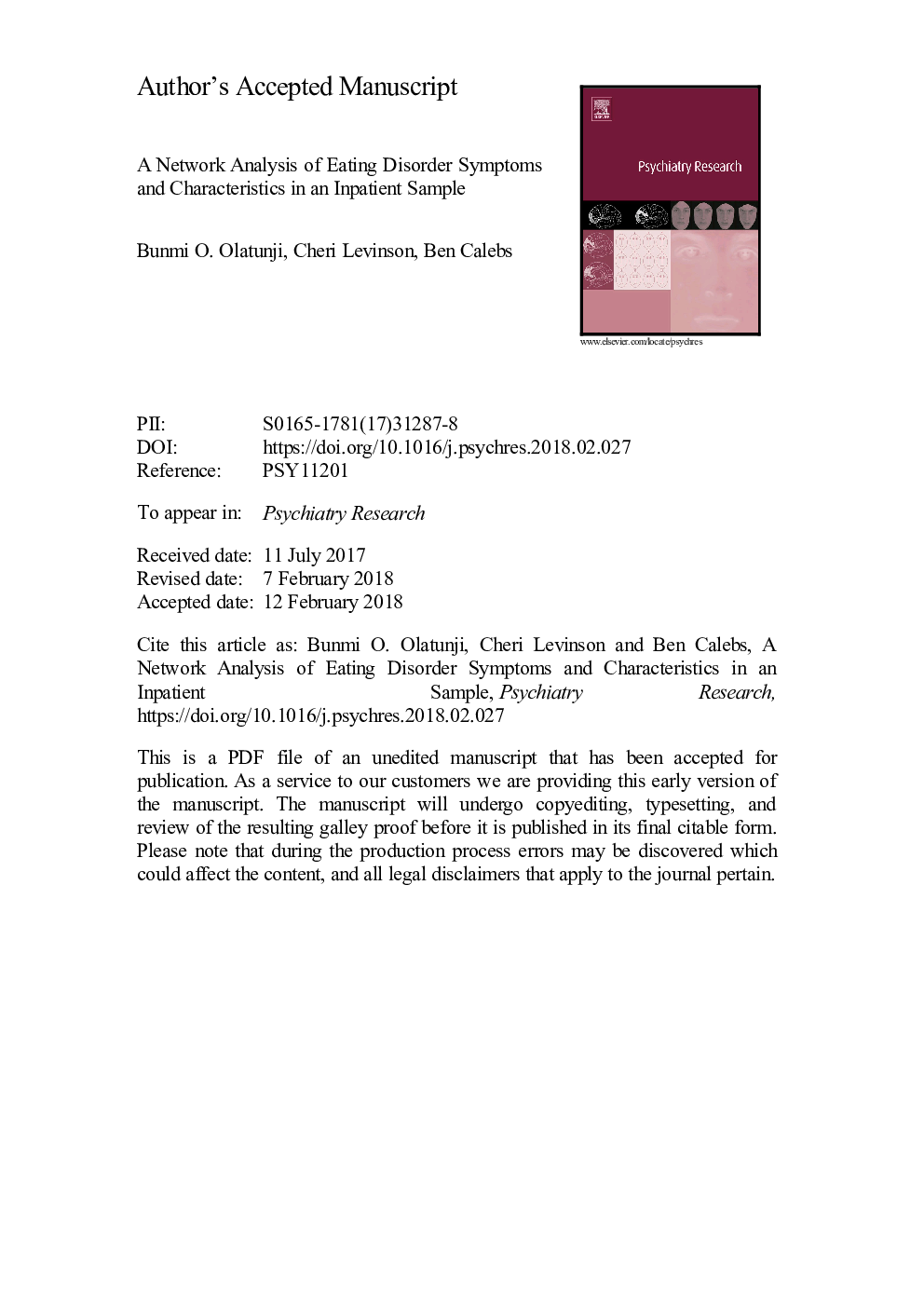| Article ID | Journal | Published Year | Pages | File Type |
|---|---|---|---|---|
| 6811636 | Psychiatry Research | 2018 | 42 Pages |
Abstract
Eating disorders (EDs) are characterized by symptoms that reflect disturbed eating habits. Available data on EDs largely reflects a traditional latent variable model, whereby symptoms reflect an underlying entity. The network model is an alternative approach where ED symptoms do not reflect an inferred, unobservable category or dimension, but rather are themselves constitutive of the disorder. In the present study, data from ED patients (nâ¯=â¯5193) that completed the Eating Disorders Inventory ââ¯2 (EDI-2; Garner, 1991) before and after inpatient treatment were used to identify symptoms (i.e., body dissatisfaction) and characteristics (i.e., perfectionism) central to EDs. Results revealed that interoceptive awareness and ineffectiveness, but not body dissatisfaction and drive for thinness, were central to the ED network at admission and discharge. Although effect sizes were small, multiple regression analyses revealed that ineffectiveness at admission predicted discharge BMI (over and above interoceptive awareness and BMI at admission) and discharge depression (over and above interoceptive awareness and depression at admission), but not discharge anxiety. These findings suggest that interoceptive awareness and ineffectiveness are central symptoms of EDs that may have implications for treatment outcome. The implications of these findings for conceptualizing the nature and treatment of EDs are discussed.
Related Topics
Life Sciences
Neuroscience
Biological Psychiatry
Authors
Bunmi O. Olatunji, Cheri Levinson, Ben Calebs,
